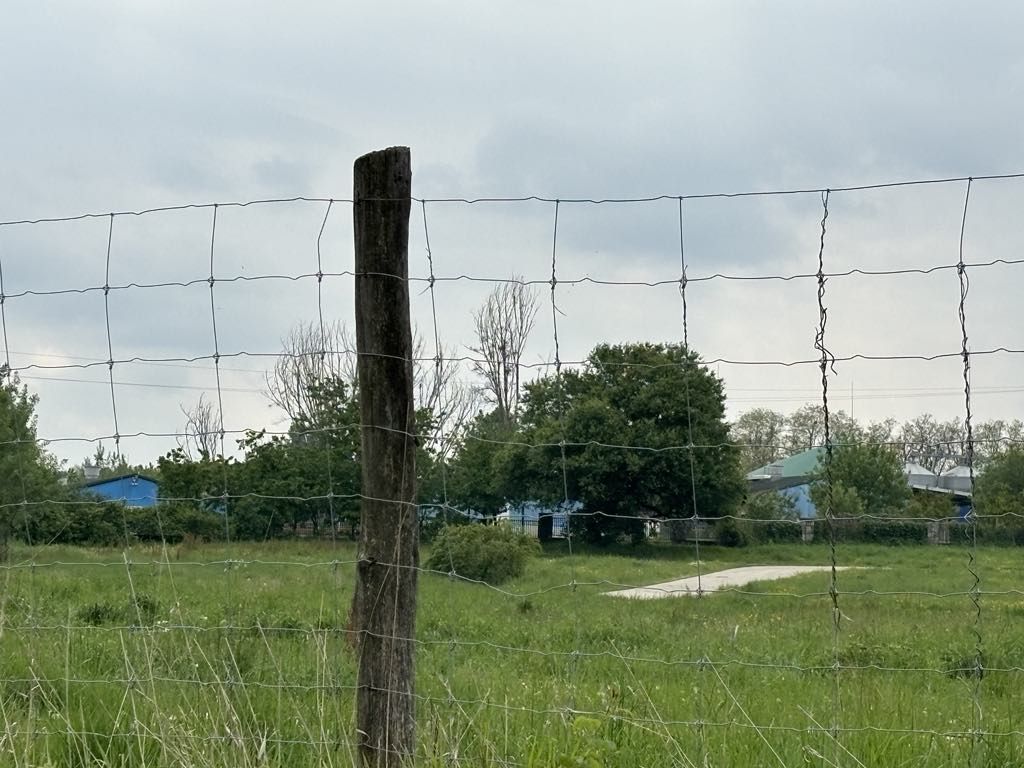- This story is part of a series highlighting local testimonies and collective action against animal factories
In the village of Kisbér, located in Komárom-Esztergom County, Hungary, a battle has been ongoing for over a decade against a pig factory and biogas plant situated just 800 metres from the village’s residential area. Despite initial promises of minimal odour pollution impacts through tree-lined areas and modern technologies, the reality is different.
A bit of context: shortcomings of the facility
Since it started operating in 2012, the biogas plant has caused persistent and severe problems for local residents, the main one being the stench. While there are 12 pigsties in the vicinity, the most intense odour issues stem from the plant’s activities. The geographical layout of Kisbér, located in an open basin in the Morian Trench, exacerbates the problem, as southerly winds carry the unpleasant smell throughout the village and north-westerly winds impact neighbouring villages.
The community’s struggle
In response to the mounting pollution, 119 residents filed a lawsuit to seek justice. Independent experts have been brought in to prove the existence of the stench. They then filed a lawsuit against landowner Péter Pongrácz and his company Bakony Bio Zrt., represented by their lawyer Bence Szentkláray. So far, two public hearings on the issue have been held, attended by around 100 people, and the community has collected 450 protest signatures. The mayor of Kisbér has also voiced public support for the opposition.

The authorities and the contractor
Despite the ongoing pollution, the plant has received only minor fines, which have not encouraged them to make significant changes to their technology or filtering equipment. The contractor claims compliance with all necessary permits and standards set by the authorities, asserting that their biogas plant is the one that mitigates the stench, and that without it the situation would be much worse.
Residents suspect that the contractor, who is also president of the Hungarian Biogas Association and the Association of Renewable Energy Organisations, has influential connections that have resulted in insufficient regulatory action. They believe this influence is why the environmental authorities have been slow to stop the pollution. At the time the lawsuit was filed, some lawyers even declined to represent the residents, fearing repercussions from powerful enemies.
The mayor asserts that he has already taken steps by proposing several technical measures to help mitigate the pollution, but the municipality is reluctant to push for more ambitious changes by fear of the economic impacts. Unfortunately, the Member of Parliament is unresponsive to the growing concerns and there is a lack of solidarity from the less affected residents.
Legal action and next steps
On February 21, 2022, the first-instance court awarded damages of HUF 500.000 on some plaintiffs, while the majority were given HUF 300.000. However, for the victims, the judgement was not up to the severity of the pollution impact, so they decided to appeal. The case was sent back to the first-instance court due to procedural errors and was retried in April of this year, with the same judgement reaffirmed. The modest compensation has been deemed insufficient to compel significant technological upgrades, leaving the pollution issue still unresolved.
Investigative insights and broader implications
The situation in Kisbér has caught the attention of investigative journalist Lilith Grull, of the German newspaper Correctiv. Grull cited in her piece an EU directive that sets emissions limits for both ammonia and methane from agricultural sources, which further strengthened residents’ claims. Other problems in the area were also mentioned, such as the dumping of slurry (animal waste) from nearby pig factories on the village’s land. As this is a nitrate-sensitive area, it is particularly important to comply with the rules on the application of manure, as this otherwise results in serious contamination of the land.
Moving forward
The example of Kisbér’s struggle highlights the importance of strong action by environmental authorities to protect local residents facing similar challenges. The reason for the authority’s inaction, according to residents, is the entanglement of the contractor with decision-makers. But the unity and perseverance of the Kisbér community remains a beacon of hope, demonstrating the power of collective action.







